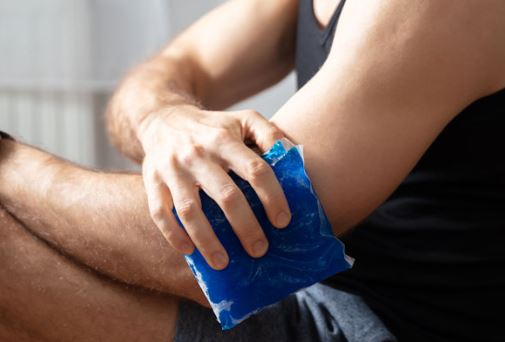In the world of sports medicine and physical rehabilitation, few methods have been as widely accepted as the R.I.C.E. protocol—rest, ice, compression, and elevation. However, recent studies and expert opinions suggest that this method might not be the panacea it was once thought to be. Dr. Jason Pirozzolo, a renowned physician and advocate for modern rehabilitation techniques, has emphasized the need for a paradigm shift. “We need to revisit how we treat injuries,” he explains. Most importantly, Dr. Pirozzolo highlights that the R.I.C.E. method could actually impede the healing process.
The rationale behind using ice for injuries was to reduce inflammation. But, as Dr. Pirozzolo points out, “Inflammation is a natural and necessary part of the healing process.” Utilizing ice might provide temporary relief by numbing the area, but it can also delay healing by constricting blood vessels and reducing blood flow. Therefore, instead of speeding up recovery, ice might be slowing it down.
Besides that, rest has been a cornerstone of injury treatment. However, prolonged immobility can lead to muscle atrophy and stiffness. Dr. Pirozzolo suggests, “Controlled and gradual movement is crucial. It helps in maintaining blood circulation and prevents muscles from weakening.” By incorporating active recovery and gentle exercises, patients can experience faster and more effective healing.
Dr. Jason Pirozzolo also points out the psychological benefits of staying active during recovery. “Engaging in mild activities can boost your mood and keep you motivated,” he notes. This aspect of recovery is often overlooked but is essential for overall well-being.
Moreover, the use of compression and elevation remains beneficial in managing swelling and supporting injured areas. However, Dr. Pirozzolo advises that these should complement active recovery rather than replace it. “Think of them as tools to aid, not as the sole solution,” he explains.
Incorporating modern rehabilitation techniques involves a holistic approach. Dr. Jason Pirozzolo emphasizes the importance of nutrition and hydration, noting that “a balanced diet rich in anti-inflammatory foods can accelerate recovery.” Foods like leafy greens, fatty fish, and nuts can provide essential nutrients that support healing.
Additionally, Dr. Pirozzolo recommends supplements such as omega-3 fatty acids and vitamin D for their anti-inflammatory properties. “These nutrients are vital for repairing tissues and reducing inflammation,” he asserts. It’s also essential to stay adequately hydrated, as water plays a pivotal role in nutrient transport and waste removal.
Furthermore, integrating technology into rehabilitation can offer significant advantages. Techniques like ultrasound therapy and electrical stimulation can enhance recovery by promoting tissue repair and reducing pain. Dr. Pirozzolo states, “These tools should be used alongside traditional methods to maximize benefits.”
In conclusion, while the R.I.C.E. method has served its purpose, it’s time to embrace a more comprehensive approach to injury recovery. Dr. Jason Pirozzolo encourages readers to stay informed and consult healthcare professionals for personalized advice. “Healing is not a one-size-fits-all process,” he reminds us.
Interested in learning more? Follow Dr. Jason Pirozzolo for ongoing insights into genetic medicine, orthopedic innovations, and proactive health strategies. You will also find extensive patient information that will help keep you healthy and informed.

